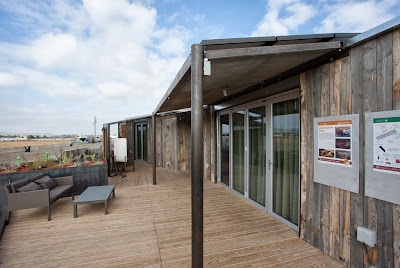Solar Decathlon Where It Belongs
The Solar Decathlon is being held in California at long last. The competition was first held in 2002, and features homes powered by rooftop solar panels, and built by teams from across the country and overseas competing to be the most sustainable in various categories. The overall winning team must design and build a home that meets the following general criteria:
not want the competition to take place on the National Mall because of the impacts of so many visitors on the grass there. The irony was lost on Interior that it felt the need to protect a typical lawn from an event that raises awareness about sustainability, even thought Interior provides fast-track approval for the destruction of public lands for big energy projects.
So I am glad for the folks out west that can attend this event, and learn about innovations in sustainable design, energy efficiency, and distributed solar generation. We should do more to tap these elements to change the energy paradigm, and challenge the assumption that more homes equal more big power plants and transmission lines.
- Is affordable, attractive, and easy to live in
- Maintains comfortable and healthy indoor environmental conditions
- Supplies energy to household appliances for cooking, cleaning, and entertainment
- Provides adequate hot water
- Produces as much or more energy than it consumes.
not want the competition to take place on the National Mall because of the impacts of so many visitors on the grass there. The irony was lost on Interior that it felt the need to protect a typical lawn from an event that raises awareness about sustainability, even thought Interior provides fast-track approval for the destruction of public lands for big energy projects.
So I am glad for the folks out west that can attend this event, and learn about innovations in sustainable design, energy efficiency, and distributed solar generation. We should do more to tap these elements to change the energy paradigm, and challenge the assumption that more homes equal more big power plants and transmission lines.




Comments
Post a Comment